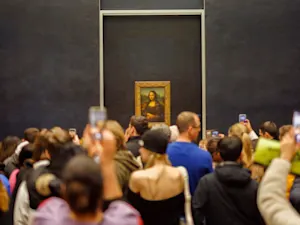
Ever Wonder How Coins Are Made?
Ever wondered how those little metal discs in your pocket come to life? The process of making coins is both fascinating and intricate, involving multiple stages from raw metal to the finished product you see every day. Here's a detailed look at how coins are made.
Step 1: Mining Raw Materials
The coin making process starts with sourcing raw materials from mines across the United States and around the globe, extracting metals such as gold, silver, and copper. Additionally, the United States Mint incorporates recycled metal from various sources, including old coins that are no longer suitable for use.
Step 2: Refining, Melting, Casting
The raw metal is refined to remove impurities, and some coins require alloys of different metals. For instance, the five-cent coin is made from a 75% copper and 25% nickel alloy. Once the desired purity or alloy is achieved, the metal is cast into large bars containing the required metal amounts.
Step 3: Rolling
Rolling the metal to the proper thickness is a detailed process involving passing it between two steel rollers that gradually move closer together. This continues until the metal is formed into a strip of the correct thickness for the coin.
Step 4: Blanking
The next step is creating blanks, which are flat metal discs that will eventually become coins. The raw materials are fed into a blanking press that pushes out blanks like a cookie cutter at a rate of up to 14,000 blanks per minute.
Step 5: Annealing
Blanks are softened through a process called annealing, which makes the metal more malleable and ready for striking. The blanks are heated to temperatures as high as 1,600 degrees Fahrenheit and then quickly cooled in a water-based solution containing citric acid and lubricants to prevent them from sticking together.
Step 6: Washing and Drying
After annealing, the blanks are washed in a cleaning solution to remove any residues and restore their original color. They are then dried using steam dryers, preparing them for the next stage.
Step 7: Upsetting
Next, the edges of the blanks are raised to create a rim, which helps protect the coin's design during circulation. This process transforms the blanks into planchets, ready to be struck with the coin's design.
Step 8: Striking
The planchets are struck by coin dies, which imprint the obverse (front) and reverse (back) designs onto the metal. This stage is where the blank pieces of metal are transformed into legal-tender coins.
Step 9: Inspecting
Each coin is inspected for any errors or imperfections. Those that do not meet quality standards are discarded.
Step 10: Counting and Distribution
Finally, the coins are counted and weighed by machines before being packaged and shipped to various Federal Reserve banks. They are then distributed to financial institutions, eventually making their way into your hands.
The intricate process of coin production ensures that each coin is not only functional but also a tiny piece of art. The next time you hold a coin, you’ll appreciate the meticulous craftsmanship that goes into making it.
References: Coin Production | How Are Coins Made?
























